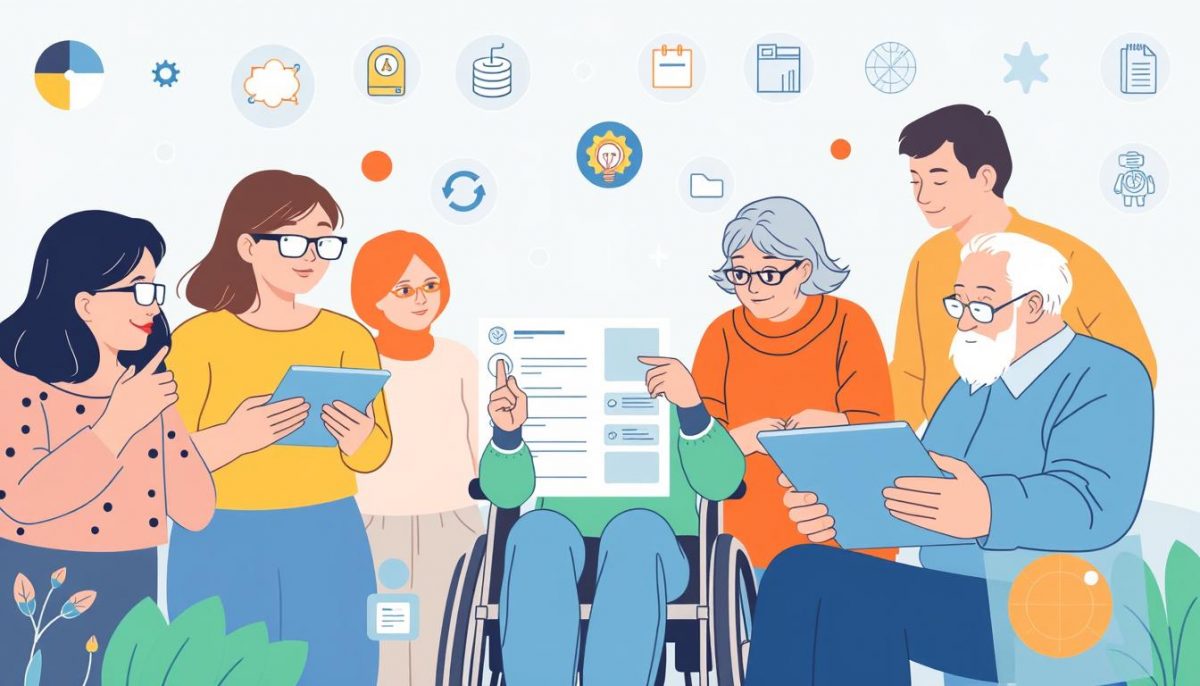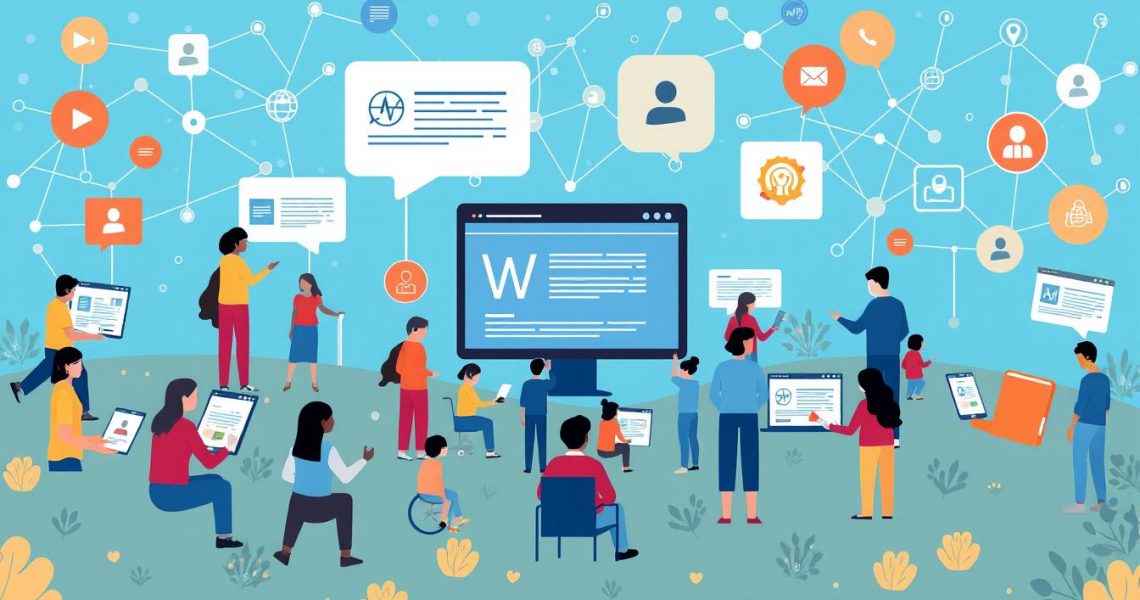Why Web Accessibility Should Be a Priority
8 November 2024In today’s digital world, making sure everyone can use the web is key. It’s about making sure all people, no matter their abilities, can get the information they need online. This idea of inclusive design means creating spaces where everyone feels included and can use technology easily.
By focusing on universal access, we don’t just help people with disabilities. We make the web better for everyone. This shows we care about digital inclusion. With about 15% of the world’s population having a disability, making the web accessible is both right and smart for businesses.
Understanding the Importance of Web Accessibility
Web accessibility means making digital spaces easy for everyone to use, especially those with disabilities. It ensures content is clear and easy to use for all, including those with visual, hearing, or cognitive challenges. By following the Web Content Accessibility Guidelines (WCAG), developers can make websites for everyone.
Defining Web Accessibility
Web accessibility makes online content easy for people with disabilities to use. It involves designing sites that work well with assistive technologies. For example, screen readers help the visually impaired, and keyboard navigation helps those with mobility issues.
The Impact on Users with Disabilities
Web accessibility greatly benefits users with disabilities. It lets them easily use and enjoy online content. Features like adjustable text and captions make websites more accessible, giving users confidence and independence.
Benefits for Businesses
Web accessibility is good for businesses too. It helps reach more people, including those with disabilities. This can open up a huge market. Plus, it improves your brand’s image and keeps customers coming back.
Websites that are easy to use also rank better in search engines. But ignoring accessibility can lead to legal trouble. Companies that don’t meet standards have faced lawsuits.

Why Web Accessibility Should Be a Priority
Web accessibility is a moral and legal must for organizations. Laws like the Americans with Disabilities Act (ADA) in the U.S. are getting stricter. Companies that don’t follow these laws could face lawsuits and big fines. It’s key to know about ADA compliance and WCAG requirements for a welcoming online space.
Legal Requirements and Compliance
Following web accessibility laws protects both consumers and businesses. Companies should use WCAG guidelines in their web design to stay legal and build a good reputation. Staying updated on laws helps avoid legal problems and keeps businesses safe.
Enhancing User Experience for Everyone
Improving online usability helps everyone, not just those with disabilities. Good design makes websites easy for all to use. Features like easy navigation, clear image descriptions, and good color contrasts make browsing better. This leads to more engagement and fewer people leaving the site.

Studies show that accessible websites get more conversions. Making websites accessible shows a care for users and protects legal rights. By following these guidelines, companies not only meet legal standards but also make the web better for everyone.
| Aspect | General Users | Users with Disabilities |
|---|---|---|
| Navigation | Easy to understand | Keyboard navigation, screen reader compatibility |
| Visual Elements | Clear images and icons | Descriptive alt text |
| Color Contrast | Attractive design | High contrast for readability |
| Accessibility Features | Enhanced usability | Assistive technologies support |
Steps to Improve Web Accessibility
Improving web accessibility is key for organizations aiming to create inclusive digital spaces. A first step is to conduct an accessibility audit with tools like WAVE and Axe. These tools spot issues that might block users with disabilities from using websites.
After finding these barriers, making changes becomes easier. Businesses should also ensure websites work well with keyboards, offer text for non-text content, and have a clear structure. These steps help everyone, not just those with disabilities.
Training staff on accessibility is also crucial. It helps create a culture of inclusivity. This training lets teams think about different user needs in their work.
Getting feedback from users with disabilities is very helpful. It gives insights that regular analytics might miss. This feedback helps make websites more usable. Also, keeping up with new technologies and updates is important to stay compliant.
By following these steps, organizations can make their websites more accessible. This is a big step towards inclusivity online.

